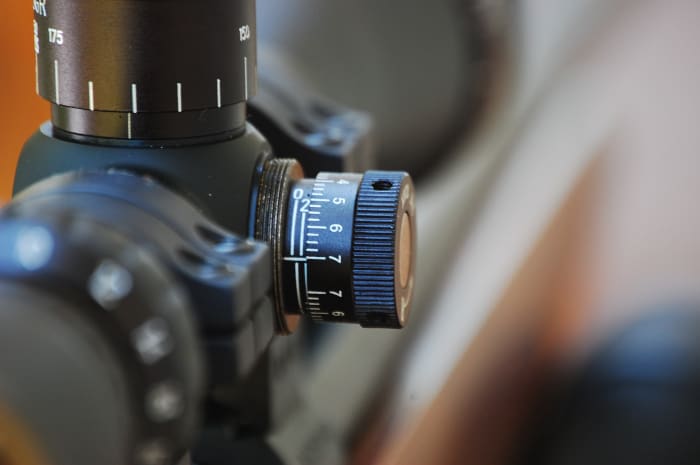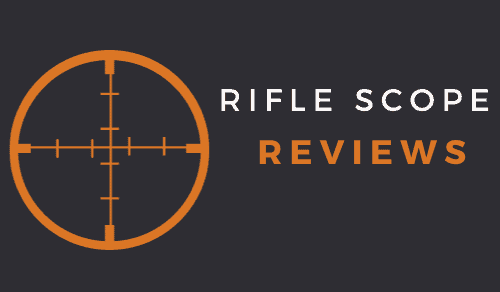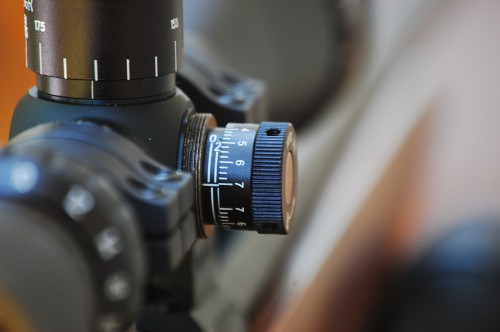As an Amazon Associate I earn from qualifying purchases. Amazon and the Amazon logo are trademarks of Amazon.com, Inc, or its affiliates.
If you are shopping for a new rifle scope, here are a few common terms that you probably should be aware of and understand. You don’t necessarily need to be an “expert” in these terms as much as understand what they mean and how they are tied to scopes:
Parallax
This is basically an optical error or illusion and is typically found in scopes designed for longer ranges. Without getting overly technical, parallax occurs when the optical image that you see through the scope is created in front or behind the reticle. This basically means that the target you are looking at isn’t being correctly portrayed in its actual location.
In order to correct this issue, some scope models feature a parallax compensation feature built-in. The most popular parallax compensation seen today is either through a front objective lens or through side focus parallax. With these features, the shooter can adjust the distance (typically in yards) to the target, and the scope is preset to be parallax-free at those predefined distances.
Adjustable Objective
Adjustable objective is also commonly seen as an abbreviation of AO. As mentioned above, in relation to parallax, an adjustable objective is typically a dial of sorts located either at the objective end of the scope or a dial on the left side of the turret (commonly called Side AO).
Most AO set-ups are designated in yards, and by adjusting the AO to the approximate distance to the target resolves the potential parallax.

Eye Relief
Eye relief refers to the distance your eye must be from the scope in order to see a full field of view through the scope. This is commonly defined in inches.
The eye relief on a scope becomes especially relevant when dealing with rifle calibers or shotgun gauges with significant recoil. An optic with short eye relief mounted on a firearm with significant recoil could lead to the optic impacting the shooter’s face.
Field of View
Also commonly referenced as FOV, the field of view refers to the total amount of area that be seen through the scope at a predetermined distance of 100 yards. This is typically measured in feet and is dependent on the level of magnification. The lower the magnification, the higher or more FOV. The higher the magnification (power), the less the field of view.
A scope’s field of view is more relevant for hunting situations than target shooting.
Magnification
Also called the power settings, this is a power rating that defines how much or far the scope will magnify your sight. Power settings are measured against the naked eye.
For example, a 3-power scope would offer the user 3 times the view of what they could see with the naked eye, while a 10-power would mean 10 times the power of the naked eye.
The magnification settings are usually defined with an “X” symbol and are written in the following manner: 3X9. This means that that scope has an adjustable magnification range of 3 and goes all the way up to 9 power. In addition to adjustable magnification models, there are also fixed powered scopes.
Exit Pupil
Exit pupil refers to the size of the column of light that exits the scope. Typically measured in millimeters, the larger the size of the exit pupil, the brighter the scope image will be.
Scope Reticle
Also called a crosshair, reticle refers to the sighting device used for a specific scope. Typically a reticle consists of lines, dots, crosshairs, or some combination of those three, which are used as a focus point on the target.
Reticles come in a wide variety of variations and configurations, with some being designed for very specific uses.
Turret
Turret is a fancy name for the adjustment knobs on the scope. Most are covered and use an incremental system to adjust the windage and elevation during the sight-in process.
Turrets can be covered by a screw-in turret cover, or, they may be exposed turrets for rapid adjustment.

Point of Impact
Commonly called POI, the point of impact refers to the actual point where the bullet strikes the target in relation to the point where the shooter was aiming.
During the scope sight in process, the scope settings are adjusted to get the POI on the desired target at a specific location.
Minute of Angle
Commonly seen and known as MOA, the minute of angle is a unit of measurement within a circle. Although the specific MOA is typically considered to be 1 inch at 100 yards, it’s actually 1.0472 inches at 100 yards.
MOA is a general standard for measuring the accuracy of rifle or shotgun. A rifle that will shoot a 3 to 5-shot group that measures under an inch is considered an MOA shooter. If a rifle shoots groups measured at 1/2 an inch or less, it’s called a sub-MOA shooter.
Tube Size
Tube size refers to the size of the scope’s main tube housing. The most common sizes seen today are:
- 1 inch
- 30mm
A 34mm tube option also exists, but it’s typically seen only on scopes designed for long distance shooting.
Scope Rings
Scope rings are the devices that connect the optic to the firearm. They go by several names, including:
- Rings
- Bases
- Scope mounts
- Scope bases
While there may be some minor differences between rings and bases, for the most part, all those terms are different ways to describe scope rings.
In order to ensure a solid fit, the scope ring size needs to match the size of the scope tube. For example, an optic with a 1 inch tube requires 1 inch rings, while a 30mm scope needs 30mm scope rings.
Lens Coatings
This term refers to the chemical coatings applied to one or both lenses in a rifle scope. The coatings themselves serve several purposes, including:
- Reduce distortion
- Enhance clarity
- Improve brightness
There are several various labels used to describe the level of lens coatings used in a scope and it can get a bit confusing. Here are the most common ones:
Coated
A scope that is labeled as having coated lenses means that at least one lens in the scope has one layer of coating. This is most common in entry level or budget oriented optics.
Fully Coated
An optic with fully coated lenses means that all the lenses in the optic have one chemical coating.
Multi-Coated
A scope with a multi-coated label means that at least one lens has multiple chemical coatings.
Fully Multi-Coated
Any optic labeled as fully multi-coated means that all the lenses feature multiple chemical coatings.
Typically speaking, more chemical coatings equal better image and light transmission, but also come at a higher price point.
I’ve been working in the firearms and sporting optics industry for over 20 years, with a personal and professional interest in all things related to rifle scopes, Through a combination of work experience, formal training, and personal experiences, I have extensive experience mounting, testing, and evaluating different rifle scope models across most major optical brands.


